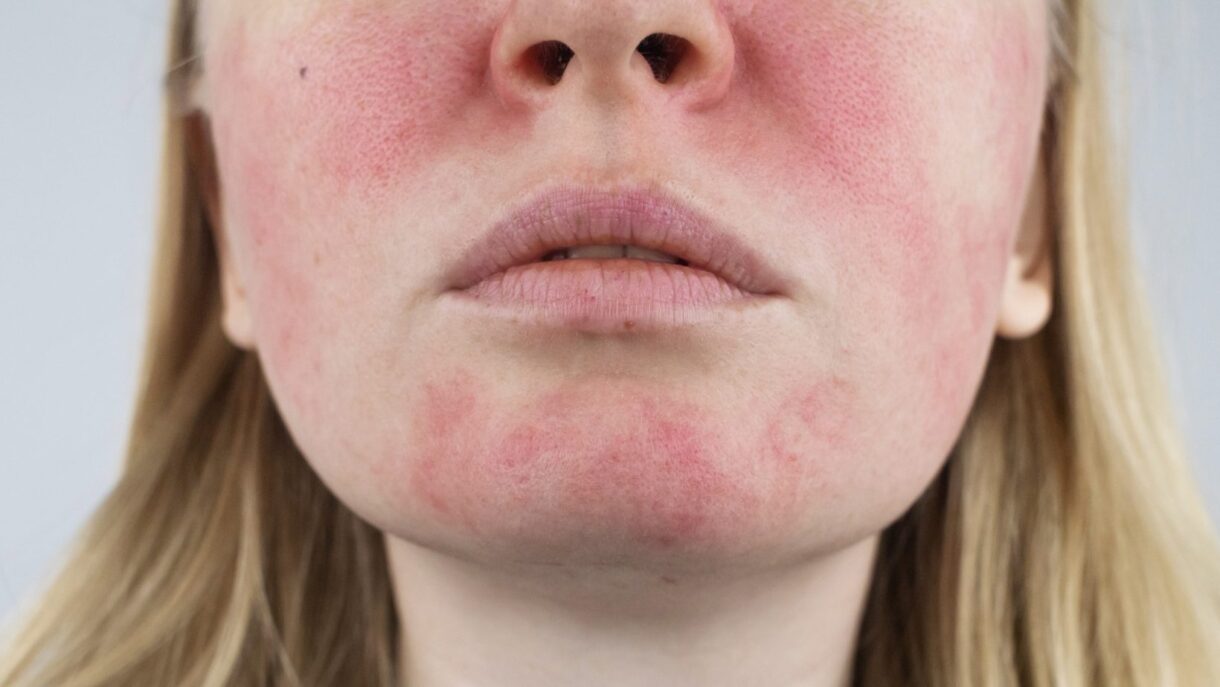Everything Coming up Rosy is not a Health Tune

People with the chronic inflammatory skin condition rosacea shouldn’t skip out on check-ups. According to a new research study from Germany, rosacea is strongly associated with melanoma, especially among fair-skinned people of northern European descent.
The results of this study also illustrated an association between rosacea and joint problems, metabolic disease, type 2 diabetes, and visual problems. Previous studies correlated rosacea with autoimmune disorders, coronary artery disease, inflammatory bowel disease, and nonmelanoma skin cancer.
Although doctors and scientists do not yet understand the fundamental cause of these results, they assume the immune system is involved. An interrupted inflammatory reaction and deficient immune response are often strong contributors to cancer development.
Along with an abnormal, overactive immune system, the condition also commonly affects another family member. This connection strongly suggests the condition is genetic.
The current study began with de-identified medical health records from a platform containing almost 22 million patients from 74 healthcare organizations. After filtering for matching age, sex, diagnoses, and time windows, an even number of patients with (122,444) and without rosacea (122,444) were included in the study. Most of each cohort was female (69.2%), and the mean age was 55.5 years.
In the overall study, the association between melanoma and other skin neoplasms was the most strongly associated comorbidity with rosacea. Mortality among patients with melanoma was higher if they also suffered from rosacea.
The analysis used an odds ratio, which measures the association between an exposure and an outcome. An odds ratio of 1 indicates that the likelihood of the event occurring in both study groups (with or without a condition) is equal. When analyzing whether patients with rosacea had an increase of nonmelanoma skin cancer, the odds ratio was 5.55, which means the odds were over fivefold higher for an association. An increase in melanoma among the population of people with rosacea yielded an odds ratio of 4.47
The authors acknowledge that a limitation of their medical health records is having a majority Caucasian population. A subset analysis using an Asian population showed no association between rosacea and malignant melanoma. Initially, 470,834 patients fit the demographic parameter, but filtering left 1494 patients. The odds ratio calculated was 1, meaning the odds were equal.
The authors suggest that rosacea is more commonly observed in fair-skinned populations. Symptoms include noticeable flushing and redness on the cheeks, chin, nose, and forehead among middle-aged patients that may look like acne. Alcohol, blood pressure medications or other drugs, emotional stress, exercise, extreme hot or cold temperatures, or ultraviolet radiation may trigger flare-ups.
The authors also acknowledge that a previous Danish study found a strong correlation between nonmelanoma skin cancer and rosacea but not melanoma. Therefore, they caution against over-interpretation and highlight a need for further investigation.
This summary is based on the article: von Stebut J, Mallach M, Schneider-Burrus S et al. Rosacea is strongly associated with melanoma in Caucasians. Sci Rep. 2024;14(1):11949. doi: 10.1038/s41598-024-62552-8.






